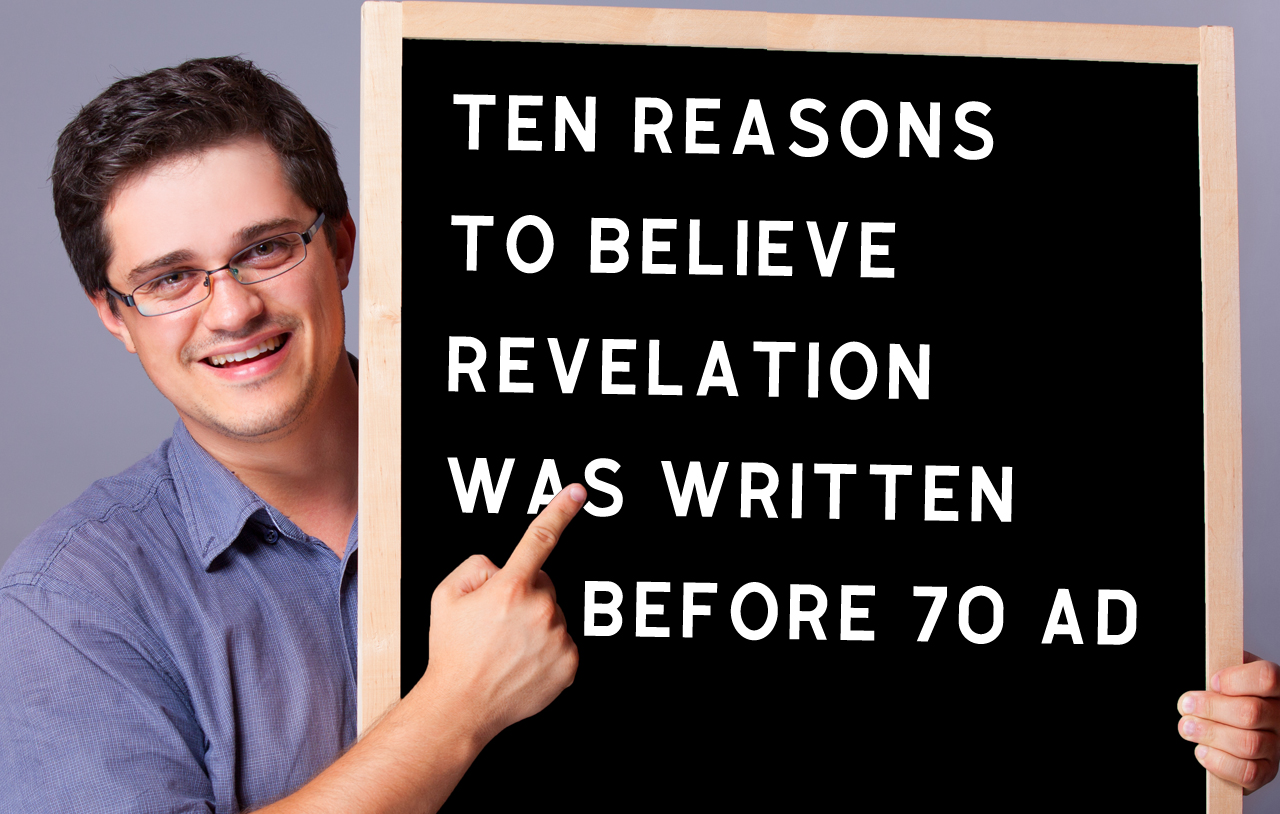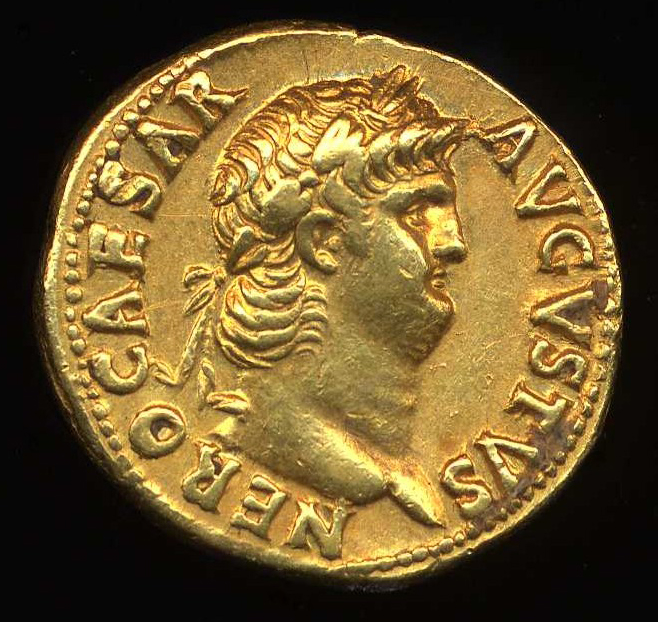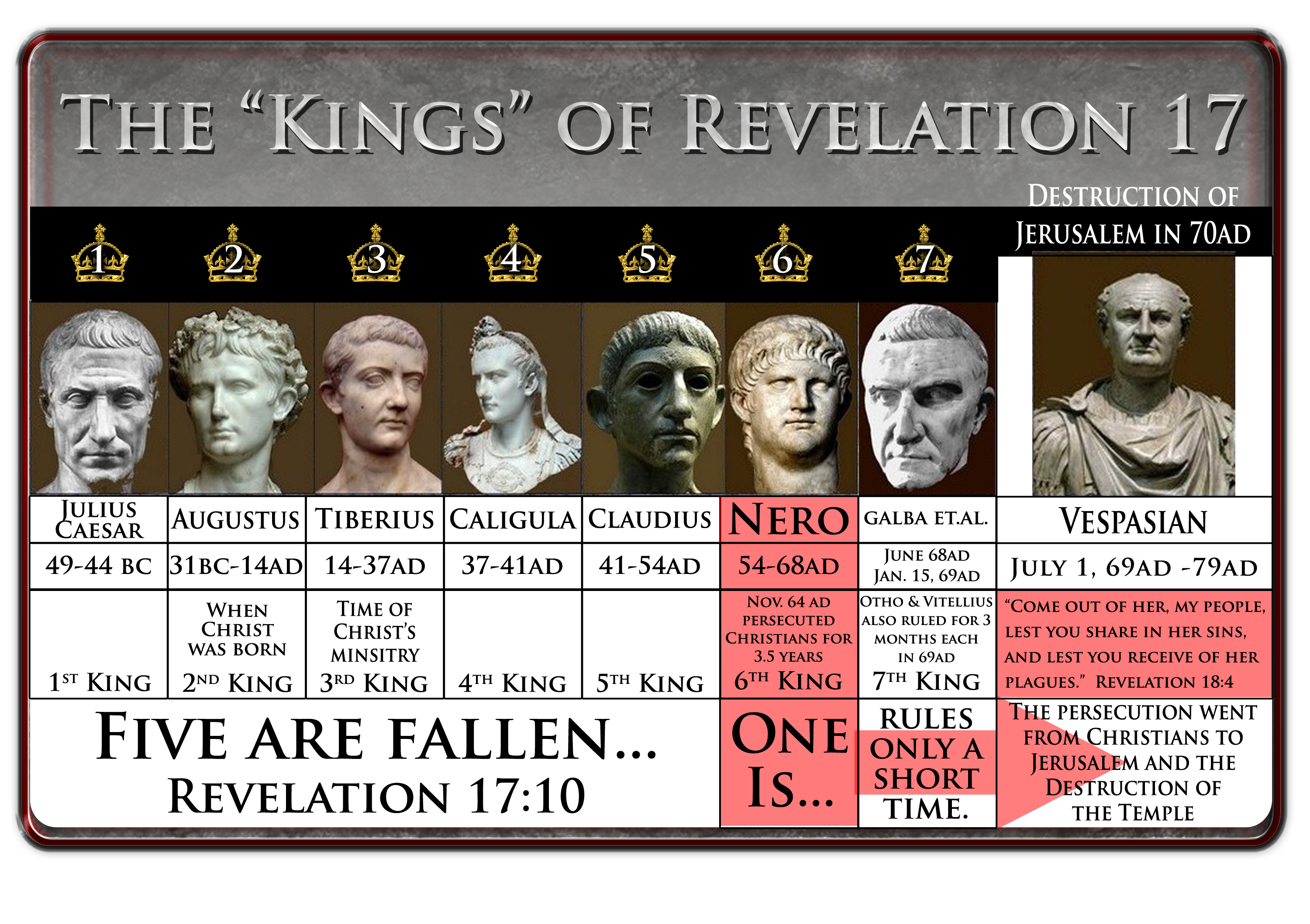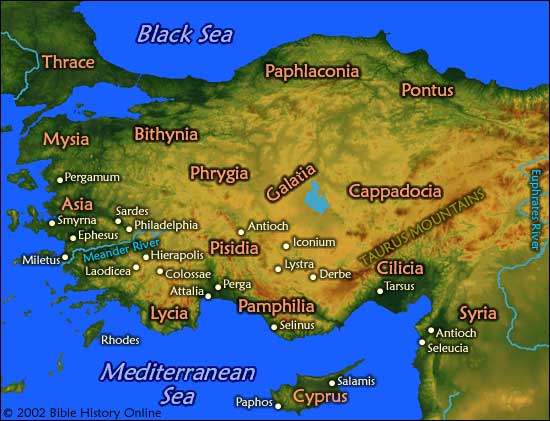
|
This is a non-WLC article. When using resources from outside authors, we only publish the content that is 100% in harmony with the Bible and WLC current biblical beliefs. So such articles can be treated as if coming directly from WLC. We have been greatly blessed by the ministry of many servants of Yahuwah. But we do not advise our members to explore other works by these authors. Such works, we have excluded from publications because they contain errors. Sadly, we have yet to find a ministry that is error-free. If you are shocked by some non-WLC published content [articles/episodes], keep in mind Proverbs 4:18. Our understanding of His truth is evolving, as more light is shed on our pathway. We cherish truth more than life, and seek it wherever it may be found. |

Why does this matter? Well, it only matters because if Revelation is about the coming destruction of Jerusalem in AD 70, then the case can be made (as I have done) that the letter was written to warn First Century Christians of that event and to identify The Beast (Nero) and to provide prophetic context for what was soon to take place.
If, however, it can be shown that John wrote Revelation after the fall of Jerusalem, then it must be a warning to Christians in the future about events that have not yet happened.
The 10 reasons below were taken almost entirely from the Raptureless blog article linked above, but my notes and comments are found below each.
 Island of Patmos
Island of PatmosBefore I share my reasons for claiming the earlier date, let’s examine why some believe it was written after the reign of Nero first because there is conflicting testimony concerning when John was exiled to the island of Patmos (where he wrote the epistle). Some have said that he was exiled there by Domitian (who came after Nero) and was on the island between 81 AD and 96 AD. However, many historical documents contradict that claim and say that John was exiled during the reign of Nero (before AD 70).
The most robust evidence for a later date comes from Irenaeus (120-202 AD), who claimed that John wrote his Revelation under the reign of Domitian. However, Irenaeus had a lousy track record for historical accuracy. For example, he also noted that Yahushua’s ministry lasted twenty years and that he was crucified at age 50. No one takes those claims seriously, so perhaps we shouldn’t take his word for the date of John's Revelation either.
Here are 10 reasons we can confidently accept the early date of Revelation rather than the later date.
 In Revelation 17:10, John says, "They are also seven kings. Five have fallen, one is, the other has not yet come; but when he does come, he must remain for only a little while"
In Revelation 17:10, John says, "They are also seven kings. Five have fallen, one is, the other has not yet come; but when he does come, he must remain for only a little while"
Here, John is attempting to identify the meaning of the 7 headed beast. He says that the seven heads are seven kings the previous five have died, and the sixth one is still living. If we start with Julius Caesar (the first Emperor of Rome) and start counting, we’ll find that the sixth Caesar – the one who is now ruling – is Nero.
Could it be any clearer than that?
John himself tells us that the ruler of the Roman Empire at the time he was writing his epistle was the sixth Caesar, and that was none other than Nero.

One of the oldest known New Testament documents is from the second century, called The Syriac or the Peshitto. In this early version, if you turn to the Book of Revelation, you’ll see this on the title page:
"Again, the revelation was upon the holy John the Evangelist from Yahuwah when he was on the island of Patmos, where he was thrown by the emperor Nero."
Since Nero ruled Rome from AD 54 to AD 68, John had to have written his epistle during this period.
The New Testament reveals that, almost from the beginning, the Jewish rulers persecuted the early church. Paul, the Apostle, was himself a member of the group that went around arresting and harassing those who followed Yahushua as Messiah. This persecution by Jews continued and intensified until something drastic happened: The Jewish Temple was destroyed, Jerusalem was ravaged, and the Jewish system of religion was effectively dismantled.
Because John refers to Jewish persecution in Revelation as something that Christians were still enduring at the time of his writing, this means that the Temple was still standing. Therefore, we can date his Revelation as being written before AD 70.
According to John’s epistle, Judaizers were very active at the time of his writing.
“‘I know your tribulation and your poverty (but you are rich), and the blasphemy by those who say they are Jews and are not, but are a synagogue of Satan.” (Rev. 2:9)
“Behold, I will cause those of the synagogue of Satan, who say that they are Jews and are not, but lie—I will make them come and bow down at your feet, and make them know that I have loved you.” (Rev. 3:9)
This would not have been an issue if the Jerusalem Temple had been destroyed when John wrote his letter.
In addition, once Paul’s letters against Judaizers (Galatians, Romans, and Ephesians) were published and circulated throughout the early church (something that we can assume came after John’s Revelation letter), this activity would not have been so easily tolerated.
So, after Paul’s letters denouncing Judaizers, this would not have been an issue. The fact that John addresses the problem means that Paul’s letters had not yet been written and circulated. Therefore, Revelation was written before Galatians, Romans, and Ephesians, which means it was Pre-AD 70.
In Revelation, Chapter 11, John is told to go and to “measure the temple of Yahuwah and the altar, and those who worship in it.” (v. 1)
If the Temple had been destroyed, John could not have done this. Therefore, John’s Revelation was probably written before the destruction of Jerusalem in AD 70.

Throughout Revelation, John continues to remind his readers that the events he is foreshadowing in his letter will come to pass “shortly,” “soon,” or “quickly.” If he meant that these events would happen more than 2,000 years later, he indeed could have said so. But he didn’t.
“The Revelation of Yahushua Christ, which Yahuwah gave Him to show to His bond-servants, the things which must soon take place..” (Rev. 1:1)
“Blessed is he who reads and those who hear the words of the prophecy, and heed the things which are written in it; for the time is near. “ (Rev. 1:3)
“And he said to me, “Do not seal up the words of the prophecy of this book, for the time is near.” (Rev. 22:10)
“He who testifies to these things says, “Yes, I am coming quickly.” Amen. Come, Lord Yahushua.” (Rev. 22:20)
To explain this reason (and the reference above from Rev. 22:20), it’s necessary to first define what we mean by the “Coming” of Yahushua, as opposed to the “Return of Christ” at the End of the World.
There are several references throughout the Bible to judgment events as “the coming of Yahuwah.” For example, in the OT, we find prophecies about Yahuwah’s judgment against certain nations expressed this way:
“Behold, the LORD rideth upon a swift cloud, and shall come into Egypt: and the idols of Egypt shall be moved at his presence, and the heart of Egypt shall melt in the midst of it.” (Isaiah 19:1)
Did Yahuwah ride on a cloud and attack Egypt? No. However, the Assyrian army did attack Egypt in fulfillment of this prophecy around the 7th century BC.
It’s the same way that Yahushua says he will “come in the clouds” to bring judgment against Jerusalem for rejecting him and his gospel. For example, Yahushua tells the High Priest that he will personally see Yahushua coming on the clouds with power:
“Yahushua said to him, “You have said it yourself; nevertheless I tell you, hereafter you will see the Son of Man sitting at the right hand of Power, and coming on the clouds of heaven.” (Matthew 26:64)
This promise was made to a certain man, Caiphas, the High Priest: “You will see the Son of Man…coming on the clouds of heaven.”
Yahushua also prophesied during his Olivet Discourse (which is all about the destruction of the temple) the following:
“And then the sign of the Son of Man will appear in the sky, and then all the tribes of the earth will mourn, and they will see the Son of Man coming on the clouds of the sky with power and great glory.” (Matt. 24:30)
So, having said all of that, let’s look at what John says in Revelation:
“BEHOLD, HE IS COMING WITH THE CLOUDS, and every eye will see Him, even those who pierced Him; and all the tribes of the earth will mourn over Him. So it is to be. Amen.” (Revelation 1:7)
Here, John says that the same people who crucified Christ will see him “coming in the clouds,” which not only aligns with Yahushua’s own words but also points to a coming Judgment against Jerusalem by using the phrase “coming in the clouds” as a reference to those OT passages above.
For the record, “those who pierced him” were not alive in AD 96 when some believe John wrote Revelation. How do we know this? Because they were all killed in AD 70 when the Romans destroyed Jerusalem. Therefore, “those who pierced him” were still alive before AD 70, and that means John had to have written his letter when they were still living.
We know from the writings of Jerome (an early Church Father) that John the Apostle was seen in AD 96 and that he was pretty frail, saying:
"…he was with difficulty carried to the church and could speak only a few words to the people.”
John is told “not to seal up the vision.” Why? Because he is told his prophecy “concerns things which must shortly come to pass.” (See Rev. 22:10).
|
However, if we read Revelation 10:11, John says:
“(I must) prophesy again concerning many peoples and nations and tongues and kings."
If John wrote Revelation in AD 96, when we have an eyewitness who says he could barely walk or speak at that time, then how could John continue to talk to anyone in that condition?
However, if John wrote Revelation in AD 70, he had many years of life left to speak to many nations and kings about the Gospel of Yahushua before AD 96.
When the angel of Yahuwah gave the prophet Daniel his prophecy, he was told to "seal up the vision, for it is a long way off" (See Daniel 12:4). But the things he wrote about were only about 483 years away. Yet John is told “not to seal up the vision.” Why? Because he is told his prophecy “concerns things which must shortly come to pass.” (See Rev. 22:10).
If the events in John’s prophecy were just a few years away (10 or 20 years), then all of this would make sense. However, if Daniel’s prophecy was sealed because it was “a long way off” (483 years), it makes no sense that John’s prophecy was NOT sealed if it “must shortly come to pass” more than 2,000 years later?!
For this reason, I believe that John’s Revelation was written before the destruction of Jerusalem in AD 70.
John’s letter begins with specific messages from Yahushua to the Seven Churches in Asia Minor. If John’s epistle were written after AD 70, say in AD 96, as some suggest, there would have been many, many more churches in that region than just seven.

Map of Asia Minor1
These are the ten best reasons for accepting the early date for the writing of John’s Revelation and for interpreting the events found in this epistle as being fulfilled by the destruction of Jerusalem by the Romans in AD 70.
This is a non-WLC article by Keith Giles.
1 - Map of Asia Minor from https://bible-history.com/maps/map-new-testament-asia-cities
We have taken out from the original article all pagan names and titles of the Father and Son, and have replaced them with the original given names. Furthermore, we have restored in the Scriptures quoted the names of the Father and Son, as they were originally written by the inspired authors of the Bible. -WLC Team